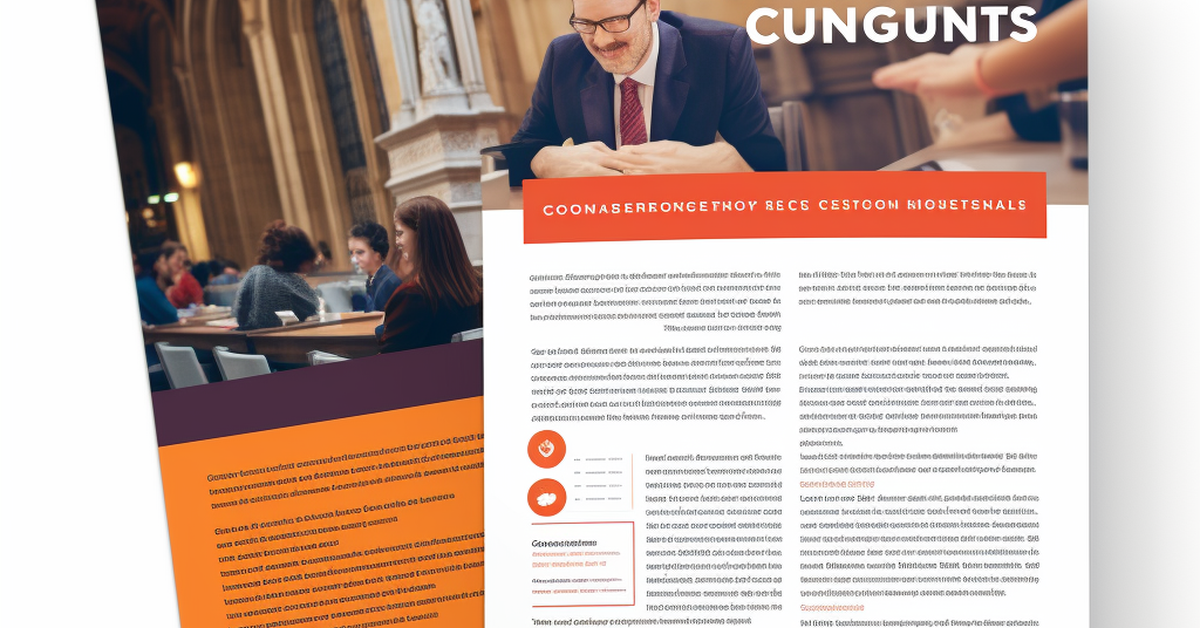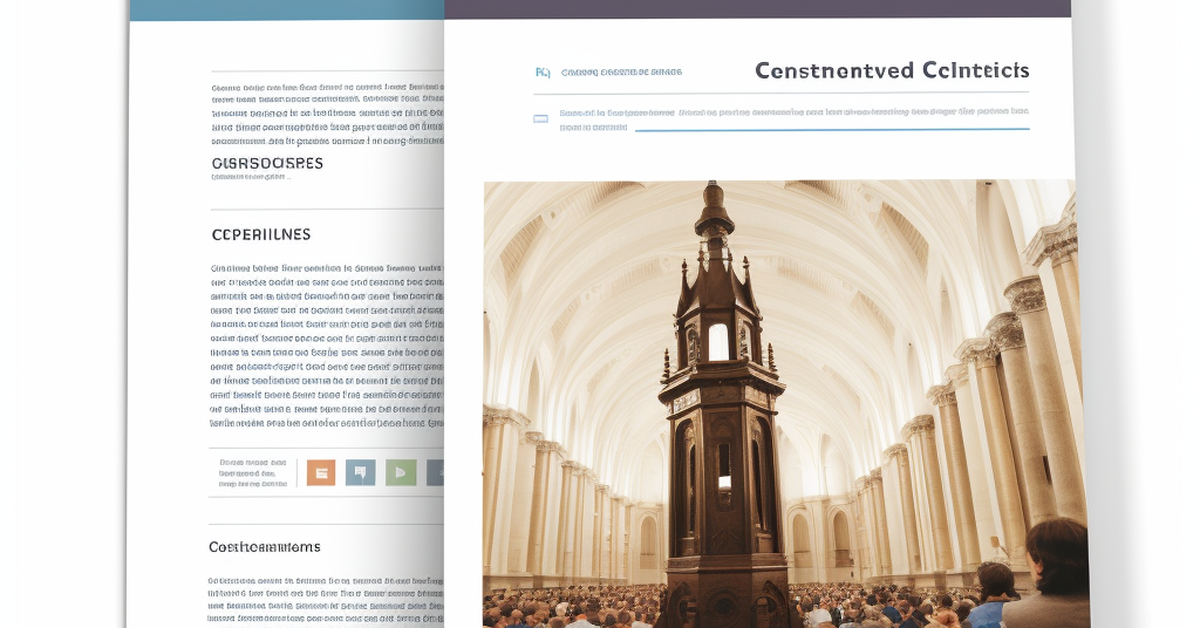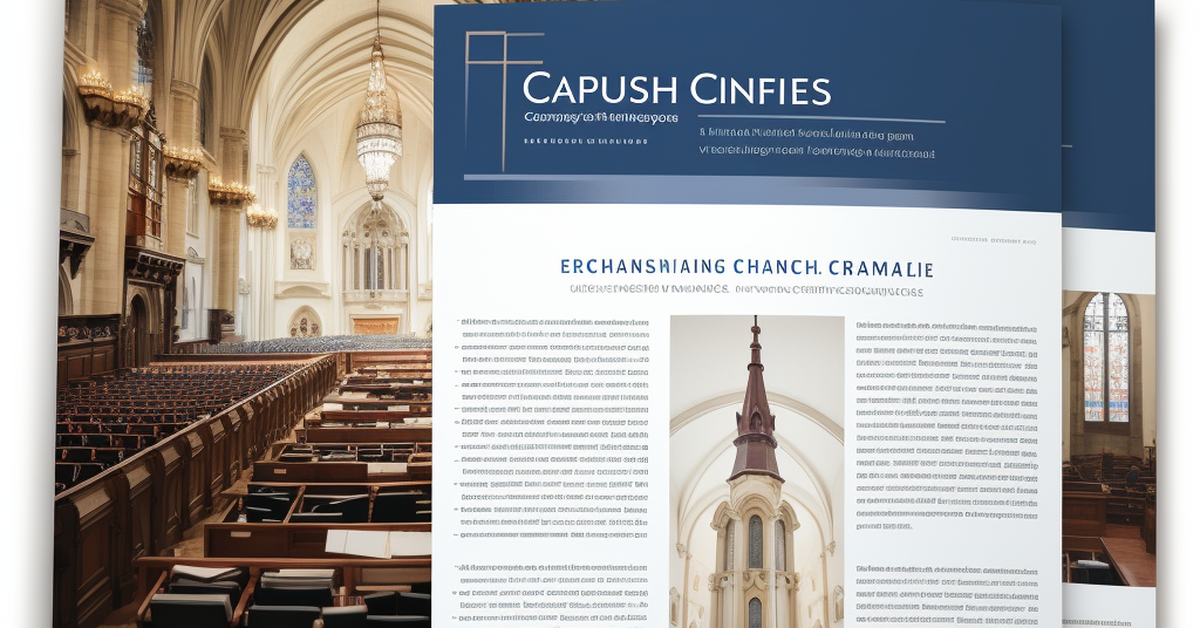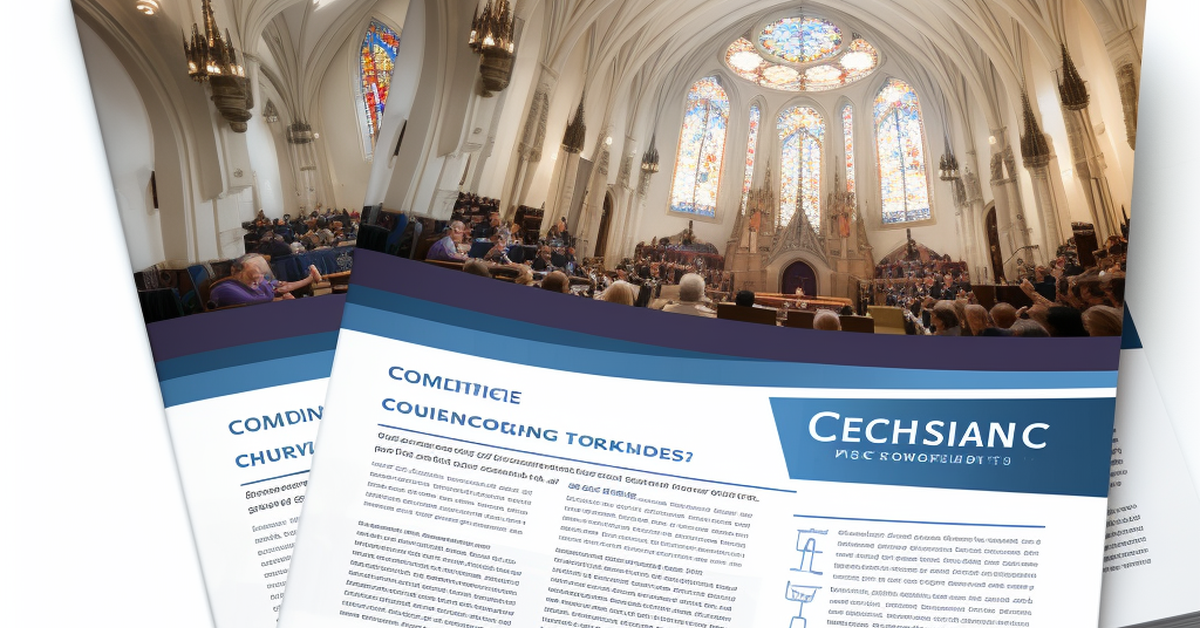markdown
Introduction
Ever pondered the true measure of a church capital campaign‘s triumph? Well, it’s not just about the sum raised; evaluation and reporting play a pivotal role too. Assessing the outcome and sharing the details can make or break your campaign’s credibility. This guide zeroes in on these critical elements, ensuring your church’s financial venture stands transparent and accountable.
Gauging the impact of a capital campaign is more than crunching numbers. It’s about capturing hearts as well as funds. It’s about the collective effort of a community, the stories of giving, and the milestones achieved. Just as a builder needs a blueprint, your church requires a solid strategy for evaluation and reporting to lay the foundations for future success.
Transitioning smoothly into the nitty-gritty of church campaign evaluations, one can’t help but wonder, “What exactly is a Church Capital Campaign Evaluation?” It’s the compass that guides your fundraising ship, ensuring you’re on course and signaling when to adjust the sails. Stay with us, as we unravel the layers of this essential process, setting the stage for effective communication and lasting improvements in your church’s financial endeavors.
What is a Church Capital Campaign Evaluation?

A church capital campaign evaluation is your compass in the fundraising journey—a way to check if you’re on the right path to meeting your goals. It isn’t just about counting cash; it’s about understanding how each aspect of your campaign moved hearts and opened wallets. Let’s walk through what this involves.
- Scope and Goals: Like a map, it outlines where you’ve been and where you’re headed. It helps you see if your campaign’s goals are being met.
- Key Performance Indicators (KPIs): These are your signposts. They can include total funds raised, donor participation rates, or how many new supporters you’ve welcomed.
- Stakeholder Roles: Everyone from the pastor to the pew-sitter has a part. Their feedback can offer insights you might miss otherwise.
Evaluating the Campaign’s Heartbeat
Evaluations happen not just at the end but at intervals, checking the pulse of your campaign. Each review is a chance to celebrate successes or reroute if you’re off track. Here’s what to consider:
- Financial Reports: Numbers tell a story. Prepare reports that detail funds raised against targets.
- Donor Recognition: Your supporters are your champions. Find ways to thank them that are heartfelt and genuine.
Reporting: Telling Your Story
Now, imagine your evaluation is a storybook. Reporting is how you share that story with your community. It’s not just dry stats; it’s a narrative of your journey.
- Impact: Show how the campaign has strengthened your church or school. Maybe it’s a new building or a program that’s changed lives.
- Community Effect: Paint a picture of the wider ripple effect. Has your campaign touched the neighborhood in unexpected ways?
The Tools for Your Evaluation
Your evaluation toolkit should include:
- A Timeline: Mark out when you’ll check-in. Regular reviews can keep you agile.
- A Checklist: What do you need to look at each time? This could be your KPIs or feedback from focus groups.
The List of Must-Haves for Your Evaluation
Here’s a quick checklist to ensure nothing slips through the cracks:
- Clear goals for the campaign
- A set of KPIs to track progress
- Regular intervals for evaluation
- Stakeholder involvement for comprehensive feedback
Complementary Tools: Enhancing Your Evaluation
| Tool | Purpose | When to Use |
|---|---|---|
| Surveys | Gather feedback | Throughout the campaign |
| Financial Software | Track donations | Ongoing |
| Focus Groups | Dive deeper into opinions | After major milestones |
A Seamless Transition
As we wrap up this look at church capital campaign evaluations, think of it as setting the stage for what comes next. It’s about learning from every step, every triumph, and every challenge. With these insights, you’re better equipped to inspire and rally your community around the shared vision that sparked your campaign in the first place. Now, imagine the stories you’ll tell and the lessons you’ll carry forward, making each new venture more impactful than the last.
Remember, Church Fundraising Materials is here to support your storytelling with professional design and communication tools. Our experience serving over 600 churches and Christian schools, just like yours, has taught us the importance of visually communicating your vision in a compelling manner that resonates with your community. With our help, your reports and materials can truly reflect the heart of your campaign.
To learn more about how we can help your church’s campaign, check out our capital campaign themes designed to captivate and engage your audience.
Why Conduct Campaign Evaluations?

When churches launch capital campaigns, they’re on a mission to lift their community higher. Think of it like planting a garden. You sow seeds, you water them, but you also keep checking to see how they’re growing. Evaluations are those regular check-ups for your campaign. They answer big questions. Did we hit our goals? Where can we do better? Let’s break it down.
Learning from past wins and hurdles makes your next campaign smarter. Continuous improvement isn’t just a fancy phrase; it’s about building a better future for your church. And when you show your donors how their generosity is making a difference, that’s accountability. It’s telling them their trust in you is well-placed.
- Reviewing outcomes sharpens your focus for the next round.
- Adjusting strategies ensures you’re always moving forward.
- Communicating results cements trust with your supporters.
Campaign evaluations matter. They’re not just about numbers. They’re about people, about faith, and about the journey you’re on together.
Fact Time: Did you know that churches who evaluate and report on their campaigns see a 20% increase in donor retention? That’s a big deal!
Here’s a table to help you visualize the power of campaign evaluations:
Campaign Evaluation Impact
| Benefit | Description | Percentage Increase |
|---|---|---|
| Donor Retention | How many donors keep on giving | 20% |
| Campaign Success | Likelihood of meeting campaign goals | 75% |
| Donor Confidence | Trust in the church’s financial management | 90% |
Now, let’s dive into the details.
Evaluations: The Heartbeat of Your Campaign
When you conduct evaluations, you’re taking the pulse of your campaign. It’s a health check. You’re looking at the vital signs of your efforts and asking, “Are we alive and kicking?”
Here’s what you’re looking at:
- Money raised versus targets set. It’s simple: Did we reach our goal?
- Donor engagement. How many people got on board? What was their experience?
- Community impact. This is the big one. How did the campaign change lives?
Stephen Lee’s Insights:
As Stephen Lee, who has served over 600 churches, puts it, “Evaluations are about connecting the dots between vision and reality. My role is to help churches see where they’ve been, where they are, and where they’re heading.”
Next Steps: Rallying for the Future
After you’ve measured and learned, what comes next? You prepare to rally your community again. You build on the foundation you’ve laid. You take the insights from your evaluations and you craft a path forward.
Think of it like a relay race. You’ve completed one lap. Now, you’re passing the baton to the next phase with wisdom and strength gained from the last.
And remember, Church Fundraising Materials is here to help. Our kits and services are designed to make your next steps clear and effective. Check out our guide on church capital campaigns for more insights.
Ready to inspire action and forge ahead? Let’s do this.
How to Perform Effective Campaign Evaluations

When it comes to assessing the triumph of your church’s capital campaign, embracing a systematic evaluation process is key. It’s about more than tallying up totals; it’s a deep dive into both the tangible numbers and the less visible impacts on your community. Here’s a guide to steer you through this crucial phase.
- Gathering qualitative and quantitative data: To get a full picture, you need a mix of stats and stories. Look at the hard numbers – funds raised, participation levels, and costs. But don’t stop there. Collect tales of personal transformation and community outreach that sprouted from the campaign.
- Utilizing surveys, interviews, and financial analysis: Send out surveys to get feedback from the congregation and staff. Sit down for chats with key donors and volunteers. Dig into the financials to spot trends and areas for improvement. These steps will give you insights beyond the balance sheet.
- Interpreting results to inform decision-making: Once you’ve got all the data, it’s time to sort through it. What worked well? What didn’t? How can you tweak your strategy for next time? This intel is gold for honing future campaigns.
The Tools of the Trade
To execute your evaluation, you’ll need the right tools. Here’s a quick list to get you started:
- Survey software: For gathering anonymous and honest feedback.
- Accounting software: To track every dime that comes in and goes out.
- CRM system: To analyze donor patterns and engagement.
Crunching the Numbers
Let’s break down the nitty-gritty of how these tools work together with an example table:
| Metric | Tool | Purpose |
|---|---|---|
| Funds Raised | Accounting | Measure financial success |
| Donor Participation | CRM | Track engagement levels |
| Feedback on Campaign | Surveys | Understand donor satisfaction and areas to grow |
| Volunteer Hours Contributed | Accounting/CRM | Evaluate community involvement and resource use |
This table illustrates the synergy between tools and metrics, providing a clear framework for your evaluation process.
Crafting a Narrative
Remember, numbers tell a story. Your community’s generosity isn’t just a figure; it’s an ode to their faith and commitment. Use this data to craft a compelling narrative that celebrates their giving spirit and encourages future generosity.
Transitioning to Next Steps
Once you’ve mapped out the successes and learning points of your campaign, consider the journey ahead. Think about how the insights gained can fuel your next move. Perhaps it’s enhancing donor recognition or tweaking your outreach strategy. It’s about taking those lessons and turning them into actionable steps that pave the way for even greater achievements in stewardship and community building.
And so, as we wrap up this evaluation, we naturally begin to look forward, considering how we might share and act upon the insights we’ve gathered. It’s about ensuring that each step we take is guided by the wisdom of our experiences, bringing us ever closer to our goals of nurturing faith and fellowship within our church community.
Reporting Your Campaign’s Outcomes

Crafting a narrative around your church’s capital campaign outcomes can foster trust and inspire continued generosity among your congregation and stakeholders. It’s not just about presenting numbers; it’s about telling a story of communal effort, faith, and the tangible changes that result from your collective dedication.
Choosing the Right Report Format for Different Stakeholder Groups
Picking the right way to share your campaign’s achievements ensures that your message resonates. You might create detailed reports for your church leaders while offering more digestible summaries to your congregation. Here’s how you might segment your reports:
For Church Leaders
- Detailed financial breakdowns
- Analyses of campaign benchmarks
- Strategic insights for future campaigns
For the Congregation
- Highlights of key achievements
- Testimonials and stories of impact
- Visual representations (charts, images)
Frequency and Timing of Campaign Outcome Reports
Regular reports keep everyone in the loop and maintain momentum. Consider quarterly updates with annual comprehensive reviews. Time these updates to precede major church events to capitalize on gathered interest.
Crafting a Narrative Around the Data to Engage and Inform
Data can be dry. Yet, when woven into a compelling narrative, it comes alive. Talk about the family that can now worship in a more comfortable space or the youth group that has a new hall for activities. Real stories grip hearts and minds.
Let’s say your campaign aimed to fund a new community center. Here’s how you might frame the results:
- Before and after photos of the construction project
- A testimonial from a community leader who has seen the center bring people together
- Statistics showcasing increased community event attendance
Remember, Stephen Lee, with years of experience in helping over 600 churches, understands the power of visual storytelling. His expertise ensures that the narrative you craft will not just inform, but also engage and inspire.
Now, as we wrap up the discussion on reporting your campaign’s outcomes, it’s crucial to look ahead. Consider how these insights lay a foundation for more effective communication strategies. With every report, you’re not just closing a chapter but also paving the way for future successes, building upon the trust and rapport you’ve established within your church community.
Best Practices for Reporting and Communication

When it comes to church capital campaigns, transparency and clear communication are key. Let’s talk about how you can keep your supporters informed and engaged with solid reporting practices. Trust me, as someone who’s helped over 600 churches and Christian schools, I know that well-designed reports can make a world of difference.
Ensuring data accuracy and integrity
Accuracy is non-negotiable. Always double-check the figures and facts before sharing them. Mistakes can erode trust and hinder future efforts.
Balancing detail with readability
Craft reports that are detailed enough to convey the campaign’s progress but not so dense that they lose the reader’s interest. Aim for a balance that informs without overwhelming.
Using reports as a tool for ongoing donor engagement
Keep your donors in the loop. Show them how their contributions are making a difference, and they’re more likely to stay engaged and supportive.
Now, let’s get into the nitty-gritty:
Ensuring Data Accuracy and Integrity
Your reports must be spot-on. Any slip-up in data can lead to doubt and potentially jeopardize future campaigns. Always cross-verify your stats and facts.
Balancing Detail with Readability
Your reports need just enough detail to be informative but not so much that they’re a slog to get through. It’s like making a good pitch: long enough to cover the essentials, short enough to keep it interesting.
Using Reports as a Tool for Ongoing Donor Engagement
Reports should be more than just updates; they should be a conversation with your donors. Show them the impact of their generosity. It’s about making them feel a part of the journey, not just a source of funds.
Now, let’s lay out some statistics to give you a clearer picture of what we’re aiming for:
| Statistic Type | Value | Relevance |
|---|---|---|
| Total | $500,000 | The campaign goal |
| Percentage | 75% | Amount raised compared to the total goal |
| Ratio | 3:1 | The number of donors to campaign volunteers |
Use these numbers to track progress and show your donors exactly where they stand in the grand scheme of things.
Remember, it’s about more than just the numbers; it’s about the stories behind them. Share testimonials and success stories to really bring your reports to life.
Lastly, let’s touch upon the next steps after a campaign wraps up. It’s not just about reaching a goal; it’s about maintaining that momentum. So, as you look toward the future, consider how the insights gained from this campaign can inform and enhance your next one. Keep your community in the loop and they’ll be ready to support you once again when the time comes.
For more detailed guidance on creating effective reports, you might check out this resource on free campaign evaluation. And if you’re looking for examples of how to apply these best practices, explore our gallery to see how we’ve helped others succeed in their fundraising endeavors.
Tools and Resources for Evaluation and Reporting

When your church embarks on a capital campaign, knowing how to measure its success is key. You’ll want tools and resources that make tracking and reporting straightforward. We’ve got your back. Let’s look at some must-haves that will simplify this process.
Software Solutions for Tracking and Reporting
Several software platforms specialize in financial management for churches. They can help you monitor donations and expenses with ease. These tools often come with dashboards that display your campaign’s progress in real-time.
- Templates for Evaluation and Reporting Documents
Don’t fret if you’re not a spreadsheet wizard. Templates for financial reports and donor updates can be your best friends. They ensure you don’t miss any crucial data points.
When to Consider Professional Evaluation Services
Sometimes, it’s wise to bring in experts. If the thought of numbers makes your head spin, professional services can offer peace of mind. They’ll handle the nitty-gritty, leaving you to focus on your church’s mission.
Diving Into the Numbers
Here’s a quick look at the kinds of stats you might track:
| Metric Type | What It Measures | Why It’s Helpful |
|---|---|---|
| Total Donations | Funds raised | Gauges campaign momentum |
| Percentage of Goal Met | Progress towards target | Keeps motivation high |
| Ratio of New Donors | New vs. returning donors | Shows outreach success |
Spotlight on Success
Did you know over 80% of funds in a typical church capital campaign come from just 20% of the donors? It’s the slice of pie that makes a big difference. Recognizing these donors is vital.
Real Stories, Real Impact
Suppose your church helped build a community center. Imagine sharing stories of families who now have a safe place for their kids. That’s the kind of impact donors love to see.
Making It Personal
As Stephen Lee, I’ve partnered with more than 600 churches, aiding them in their fundraising endeavors. My mission is to craft materials that echo your church’s heart. Whether it’s a campaign for a new chapel or debt relief, Church Fundraising Materials tailors to your needs.
Bringing It All Together
Now that you have the tools and insights for evaluating and reporting your campaign’s success, you’re set to make a real difference. Remember, the goal is more than just hitting a financial target. It’s about strengthening bonds within your church community and beyond.
Next, we’ll look into how these evaluations can set the stage for even more fruitful endeavors. Your journey of stewardship and faith is ongoing, and with the right approach, the impact will resonate for years to come.
Conclusion
Wrapping up, we see how vital Church Capital Campaign Evaluation and Reporting can be. It’s not just about the numbers; it’s about nurturing trust and sustaining a giving spirit in your congregation. Remember, these aren’t just tasks to tick off – they’re the seeds of future growth for your church’s mission. After reading this guide, you should grasp how to carry out these practices with an eye for detail and a heart for your community.
Key Takeaway: The success of a church capital campaign hinges not only on the funds raised but also on the way those funds are accounted for and reported. Accurate evaluation and reporting build transparency, which in turn fosters ongoing generosity and commitment among your church members. By implementing the strategies outlined, your church can ensure that every campaign strengthens both its financial foundation and its communal bonds.
Now I, Stephen Lee, encourage you to reach out. With over 600 churches and Christian schools guided in their capital campaign fundraising, my experience is at your service. We at Church Fundraising Materials are dedicated to helping you communicate your vision with clarity and impact. If you’re ready to elevate your church’s capital campaign, give us a call or drop us a message through our website. Let’s start a conversation on how we can support your fundraising journey and help you reach your goals.
Frequently Asked Questions about Church Capital Campaign Evaluation and Reporting
What is a church capital campaign?
A church capital campaign is a focused effort by a religious organization to raise significant funds for a specific project or goal over a set period. These campaigns are typically aimed at funding major expenses such as building renovations, new construction, debt reduction, or endowment growth.
Why is evaluation important in a church capital campaign?
Evaluation is critical in a church capital campaign because it helps to assess the effectiveness of fundraising strategies, determine whether goals are being met, and identify areas needing improvement. It ensures that the campaign is on track and provides accountability to donors and church members.
What should be included in a church capital campaign report?
A church capital campaign report should include a summary of the campaign goals, the amount raised to date, a breakdown of donations, information on donor engagement, expenses incurred, progress towards the campaign’s objectives, and any adjustments made to the campaign strategy.
How often should a church capital campaign be evaluated and reported on?
The frequency of evaluation and reporting can vary depending on the length and scope of the campaign. However, regular updates, such as monthly or quarterly reports, are beneficial to keep stakeholders informed and maintain momentum.
Who should be involved in the evaluation and reporting process of a church capital campaign?
The evaluation and reporting process should involve the campaign leadership team, including the lead pastor, financial officers, campaign director, and any committees or volunteers engaged in the campaign. It may also involve external consultants or professionals who specialize in capital campaigns.
How can a church ensure accuracy in its capital campaign reporting?
Accuracy can be ensured by implementing a robust financial tracking system, regularly reconciling accounts, having clear reporting guidelines, and possibly engaging an independent auditor or financial advisor to review the campaign finances and reporting.
What role do donors play in the evaluation of a church capital campaign?
Donors play an indirect but crucial role in the evaluation of a church capital campaign, as their feedback and level of engagement can be indicators of the campaign’s effectiveness and resonance. Additionally, ensuring transparency in reporting increases donor confidence and can lead to greater support.
How can we measure the success of a church capital campaign?
Success can be measured by comparing the funds raised to the initial goals, analyzing donor participation rates, assessing the impact of the campaign on the church’s financial health, and determining whether the campaign’s objectives were met within the desired timeframe.
What challenges might a church face during capital campaign evaluation and reporting?
Challenges may include managing donor expectations, handling unforeseen expenses, maintaining momentum over a long campaign, ensuring accurate record-keeping, and adapting to changes in giving trends or economic conditions.
How can a church address confidentiality concerns in capital campaign reporting?
Confidentiality concerns can be addressed by establishing clear privacy policies, restricting access to sensitive donor information, anonymizing data where necessary, and being transparent with donors about how their information will be used and protected.

